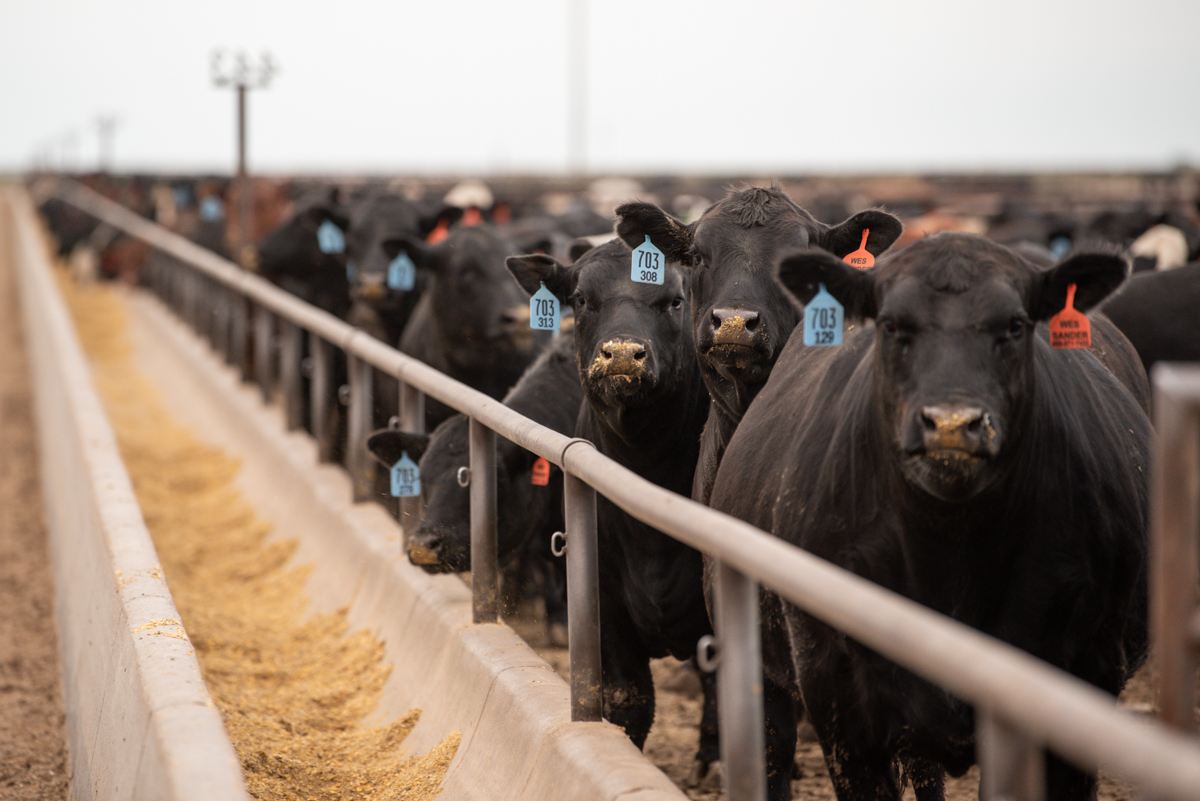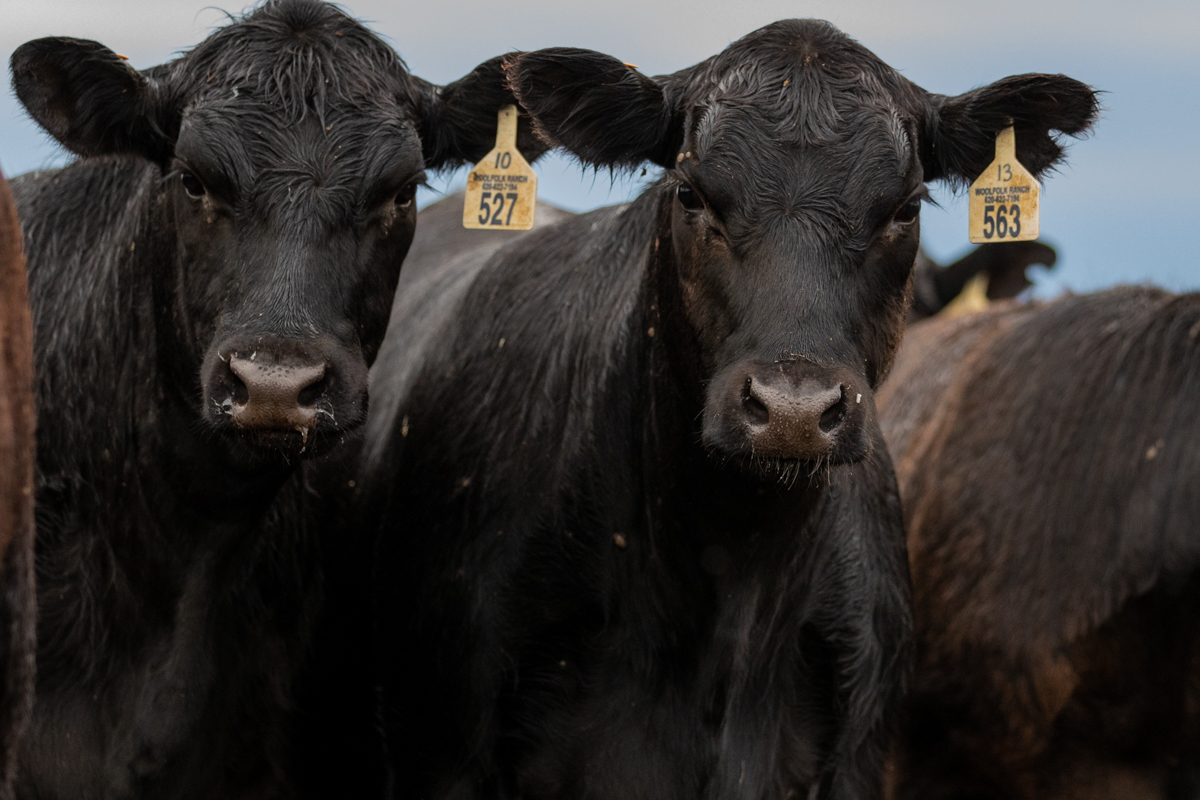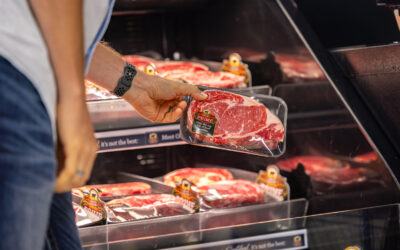
Four ways to marry implants and quality goals
March 15, 2011
In a perfect world, cattle growth promotants would improve increase marbling, too. Short of that, feeders can strike a balance between grade and gain, implant and marbling levels. Here are four of the top ways:
1) Delay implanting until full feed
“It’s almost become standard operating procedure around here,” says Robbi Pritchard, of South Dakota State University (SDSU). His team divided 650-pound (lb.) steers into non-implanted, estradiol-trenbolone acetate (TBA) implant at the start or TBA implant at 850 lb.
“If you impede marbling on the front end, you may permanently affect quality grade,” Pritchard says of the work.
Implanting increased hot carcass weight under both strategies, but the delay resulted in a 15% increase in cattle reaching the premium Choice or higher.
SDSU now waits until final diet before implanting calves, and that increases average gains by 20%.
“If they’re eating enough to gain 4.5 lb. per day, that boost is .9 lb.,” Pritchard says. “When they’re only gaining 1.5 lb. per day, in their first week, it’s only a 0.15-lb. improvement. That’s when it pulls grade out of them: when the implant is going full-tilt and the calories aren’t there.”
Agri Beef Co. adopted the strategy at its four feedlots from Washington to Kansas to improve grade.
Scott Lindsay, Agri Beef livestock division president, says the increase in quality came without a significant impact on performance, but he was surprised by other benefits.
“We cut our number of bullers way back and cattle appeared to come on feed a lot better,” he says. “The cattle just didn’t seem to get as stressed, and we didn’t have to use as many meds.”
Trial and error says to do it when cattle are on full feed. “If we said we wanted to do it on day 20 and we were in between rations, it didn’t seem to work as well,” Lindsay says.

3) Repetition matters, but fewer not always best
Top factor in both performance and marbling score? “Total dosage of hormone used,” Reinhardt says.
Splitting a high-dose implant may beat giving it all at once, especially if that’s on arrival. “That would fly in the face of the theory that one implant is better than two for marbling score,” he admits.
For support, an SDSU trial compared cattle given a six-pellet implant on Day 1 to those given a two-pellet implant every 40 days.
“You’ll end up with the same performance and you don’t do as much damage to quality grade by spreading it out,” Pritchard says. Although that’s probably an extreme example, splitting an implant is doable.
A 2005 Certified Angus Beef LLC (CAB) analysis looked at the effect number of implants had on brand acceptance rates. Going from none to one dropped Certified Angus Beef ® (CAB®) qualifiers from 37% to 19.1%, but those with two implants actually had a higher rate at 21.2%. Cattle implanted three times, however, were the lowest graders at 16.7% CAB.
“Most feedlot will give two implants, and that’s fine if the one on the front end is a lower dose like a Revelor-IS® or Component-TE-IS®,” says Gary Fike beef cattle specialist with CAB.

4) Fit it to nutrition, type
“Going for quality grade, the most important thing is to never have an implant dosage that exceeds what the caloric intake can support at any stage of production,” Pritchard says.
That’s why many feeders say their better cattle aren’t hurt as much by a higher potency implant.
“If those cattle are eating well and charging the feedbunk every day, and you’re giving them calories well in excess of maintenance, that leaves plenty of calories to help them grow and deposit marbling,” Fike says.
The most aggressive strategy should be reserved for small-frame, slow-growing cattle, he adds.
“As you increase aggressiveness of implant, you’ll increase frame size,” Pritchard says. “An overweight is a horrific penalty, so you’ll want to decrease potency if you’re looking at that limit.”
These rules of thumb come down to balance. “We don’t use a high dose implant,” Lindsay says. “We know we have to be competitive, but the end product to the consumer is very important to us.”
That’s as it should be, Tatum says. “Great taste remains the primary reason consumers often make beef their food of choice,” he says. “The goal is to take advantage of the benefits of growth enhancement without detriment to beef demand.”
You may also like
CAB Sets Sales Records, Sees Historically High Brand Acceptance Rates
In an otherwise tough time in the beef business, sales and supply records have been a bright spot. The positive numbers mean that quality beef production has not let up, and beef demand is holding. Consumers have proven the value proposition: the good stuff is worth a little more money, for a better eating experience.
Feeding Quality Forum Dates Set Earlier in August
When you’re feeding cattle, it counts to keep track of every calf, pound and dollar. Beyond the event’s educational sessions, networking between segments of the beef supply chain is invaluable—from feeders and cow-calf operators to allied industry and university researchers.
Gardiners Highlight Service, Strength at Foodservice Leaders Summit
Mark Gardiner and his son, Cole, of Gardiner Angus Ranch offered a boots-on-the-ground perspective for CAB specialists attending the annual event, designed to deliver resources that help train foodservice teams and serve consumers at a higher level.



